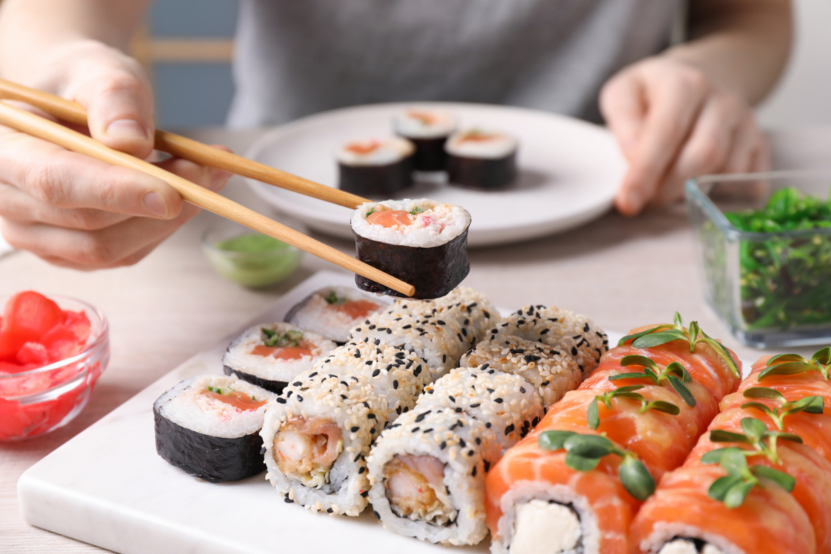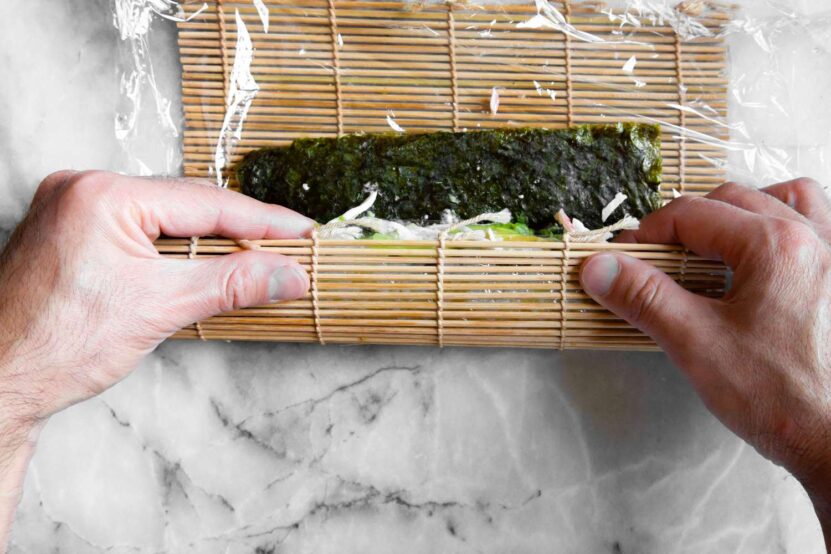Sushi has become a beloved staple of Japanese cuisine around the world and can be found in various forms on almost every menu. However, when it comes to sushi rolls, there are two distinct types that often confuse people – roll vs hand roll sushi. While they may seem similar at first glance, these two types of sushi have significant differences that every foodie should know about. Whether you’re a hardcore sushi lover or just dipping your toes into this culinary delight, keep reading to discover the difference between roll and hand roll sushi and which one is best for you!
About sushi

Sushi is a traditional Japanese dish that has been enjoyed for centuries. At its core, sushi consists of cooked vinegared rice that is rolled with various fillings and toppings. The most common type of sushi roll is the maki roll, which typically includes ingredients such as cucumber, avocado, crab meat or tuna.
In addition to maki rolls, there are other varieties of sushi such as nigiri sushi (a piece of raw fish served on top of a small mound of rice), sashimi (thin slices of raw fish) and temaki (hand-rolled cones filled with rice and seafood).
Sushi has become incredibly popular all over the world due to its unique taste and presentation. It’s not just about eating food; it’s also an art form in itself. From the selection and preparation of ingredients to the skillful rolling techniques used by chefs, every step in making sushi requires precision and attention to detail.
With so many different types available today, you can find something that suits your tastes whether you prefer raw fish or vegetarian options. So next time you’re looking for something deliciously satisfying yet healthy at the same time – don’t hesitate to give this timeless Japanese classic a try!
The difference between roll and hand roll sushi
There are many different types of sushi, but two common varieties are roll and hand roll sushi.
Roll sushi is made using a bamboo mat called a makisu. The chef places seaweed on top of the mat and then adds rice, filling ingredients like fish or vegetables, and any additional seasonings or sauces. They then carefully roll the mat to create a cylindrical shape that can be sliced into smaller pieces for serving.
Hand roll sushi, also known as temaki, is made by placing rice onto a triangular piece of nori (seaweed) and adding fillings before rolling it up into an open-ended cone shape that can be eaten with your hands.
The main difference between these two types of sushi lies in their presentation and convenience. Roll sushi tends to have more variety in its fillings since it’s easier to add multiple ingredients during preparation. Hand rolls usually have fewer components but offer portability as they can be eaten without chopsticks while on-the-go.
Both types offer unique benefits depending on what you’re looking for in your meal- whether it’s ease-of-eating or flavor diversity!
The benefits of each type of sushi

Roll sushi and hand roll sushi are both delicious types of Japanese cuisine that offer unique benefits. Roll sushi, also known as maki, is typically made with nori seaweed on the outside and rice on the inside with a variety of fillings such as raw fish or vegetables. One benefit of roll sushi is its convenience for sharing among a group.
On the other hand, hand roll sushi, also known as temaki, combines similar ingredients to create a cone shape in which you can enjoy each bite without having to use chopsticks. This type of sushi allows for more customization in terms of fillings and provides a fun interactive experience.
Both types provide health benefits since they contain omega-3 fatty acids from raw fish and fiber from vegetables like avocado or cucumber. Additionally, making your own rolls at home allows you to control portions and ingredient quality compared to store-bought options.
Whether you prefer roll or hand roll sushi depends on personal preference and occasion but regardless both offer tasty flavors plus nutritional value!
How to make your own sushi at home

Making sushi at home may seem intimidating, but it’s actually quite simple with a little bit of practice. The first step is to gather the necessary ingredients and tools. You will need sushi rice, nori sheets, fillings such as vegetables or fish, soy sauce, wasabi, and pickled ginger. You will also need a bamboo rolling mat and a sharp knife.
To begin making your own sushi rolls at home, start by preparing the sushi rice according to package instructions. Once the rice has cooked and cooled slightly, season it with vinegar and sugar for added flavor.
Next, lay out a sheet of nori on top of your bamboo rolling mat. Spoon some of the seasoned rice onto the nori sheet in an even layer. Add your desired fillings on top of the rice.
Using both hands to hold onto the edges of the mat closest to you, roll it up tightly over filling until only 1 inch remains unrolled. Wet your fingertips with water and run them along this last inch of nori before finishing rolling up completely.
Once you have rolled up all your sushi rolls using different combinations for variety; slice them into bite-sized pieces with a sharp knife while dipping blade often in hot water before each cut.
With these easy steps in mind anyone can make delicious homemade sushi!
Conclusion

Whether you prefer roll or hand roll sushi ultimately comes down to personal preference. Both types of sushi have their unique benefits and can be enjoyed in a variety of ways.
Roll sushi offers a wide range of fillings and is perfect for those who enjoy larger portions. Hand roll sushi, on the other hand, provides an intimate dining experience and allows you to savor each bite individually.
If you’re feeling adventurous, try making your own sushi at home! With practice and patience, you can create delicious rolls or hand rolls that cater specifically to your taste buds.
No matter what type of sushi you choose, always remember to pair it with soy sauce and wasabi for maximum flavor. So why not grab some chopsticks and indulge in some tasty sushi today?
